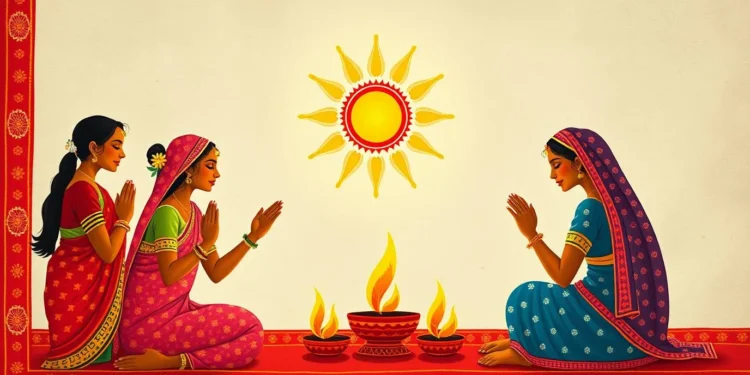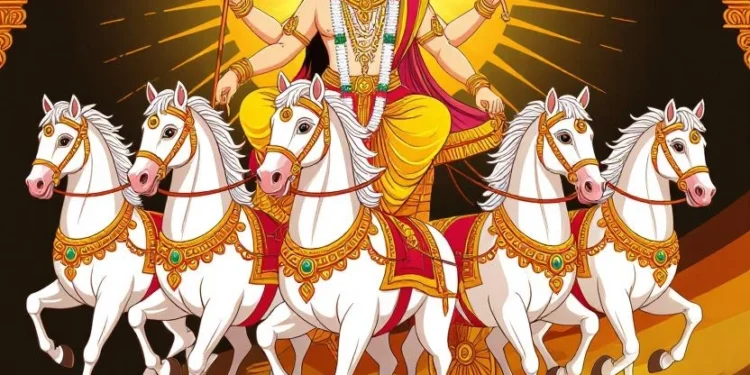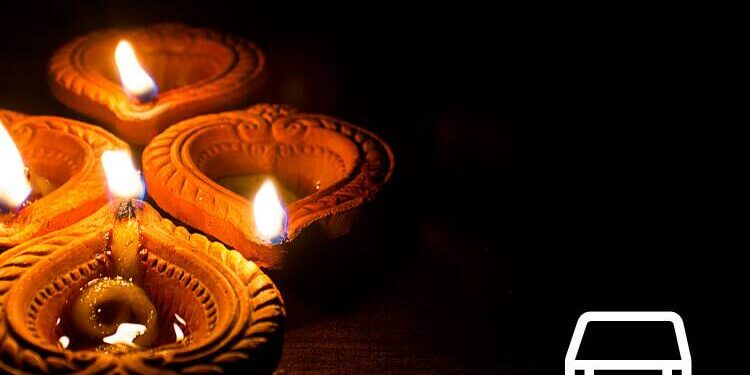Naag Panchami is a vibrant and ancient festival celebrated primarily in India and Nepal, marked by deep religious significance and rich cultural traditions. It honors the divine serpents, or “Naags,” revered as powerful symbols of life, protection, and cosmic energy in Hinduism and several other South Asian religions.

In this blog, we will explore why Naag Panchami is much more than just a ritualistic observance. It is a festival deeply rooted in dharma (righteousness, duty) and bhakti (devotion), reflecting the harmonious relationship between humans, nature, and the divine. Through stories, rituals, cultural practices, and spiritual insights, Naag Panchami teaches us to respect the natural world while nurturing faith and community bonds.
Table of Contents
1. Understanding the Meaning of Naag Panchami: Dharma and Devotion Intertwined
Naag Panchami, literally meaning the “Fifth Day of the Snake,” is observed on the fifth lunar day (Panchami) of the bright half of the Hindu month of Shravan (July/August). The festival revolves around worshipping snakes or serpents, known as “Naags,” which hold a significant place in Hindu cosmology.
The festival is deeply rooted in dharma — a Sanskrit word signifying duty, moral law, and righteousness. It is also anchored in devotion (bhakti) toward divine forces that govern nature and the universe.
In Hindu philosophy, every living being has a role to play in maintaining cosmic balance. Naags, the serpents, symbolize powerful natural forces such as fertility, renewal, and protection. Revering snakes during Naag Panchami reflects the human duty to respect and live harmoniously with nature, which is an essential part of dharma.
Simultaneously, Naag Panchami embodies devotion — the heartfelt worship of serpent gods to seek protection from dangers, blessings for prosperity, and spiritual growth. The ritualistic offerings, prayers, and fasting are acts of surrender and reverence, reinforcing the bond between the mortal and divine.
Thus, Naag Panchami beautifully combines the ideals of dharma (living righteously in harmony with nature) and bhakti (devotion to divine forces), making it a festival that sustains spiritual and ecological wisdom across generations.
2. The Mythological Roots of Naag Panchami: Stories That Shape Faith
The mythology behind Naag Panchami is vast and colorful, grounded in ancient Hindu texts and oral traditions. These stories offer rich explanations for the reverence shown toward serpents and reveal why the festival remains relevant today.
One of the most well-known legends involves Lord Shiva, one of the principal deities in Hinduism, who wears a cobra coiled around his neck. This symbolizes his control over fear, death, and the life force (kundalini). The snake also represents Shiva’s infinite power and his role as protector.
Another important tale is from the Samudra Manthan (churning of the ocean) story. When gods and demons churned the ocean to extract Amrita (nectar of immortality), a deadly poison called Halahala emerged. To save the universe from destruction, Lord Shiva drank the poison, which turned his throat blue, earning him the name “Neelkanth.” The serpent Vasuki, used as the churning rope, remains symbolic of power and sacrifice.
There is also the story of the Nag Devtas (snake deities) who live in the underground realms and are guardians of treasures. These divine serpents are believed to protect the earth and maintain balance between different worlds.
Additionally, the worship of Goddess Manasa, the serpent goddess associated with fertility and protection from snakebites, is an essential part of Naag Panchami traditions in Eastern India.
These myths emphasize the power, sanctity, and protective nature of serpents, encouraging devotees to honor and worship them to align with cosmic order and seek blessings.
3. The Symbolism of Serpents: Why Snakes Are Sacred in Hinduism
Snakes are not merely feared creatures but sacred symbols loaded with profound meanings in Hinduism and related South Asian traditions.
Kundalini Energy: In spiritual philosophy, the coiled snake represents kundalini, the primal energy residing at the base of the spine. Awakening this energy leads to spiritual enlightenment and self-realization.
Renewal and Immortality: Just as snakes shed their skin, they symbolize rebirth, transformation, and immortality. This makes them metaphors for overcoming challenges and starting anew.
Protection and Guardianship: Snakes are often seen as protectors — of temples, treasures, and sacred knowledge. Their ability to strike symbolizes defense against evil and harm.
Fertility and Life Force: The serpent’s phallic shape associates it with fertility and creation. In agrarian societies, snakes were linked to the prosperity of land and crops.
The Cycle of Time: The Ouroboros, a snake biting its own tail, represents the cyclical nature of time and the universe, an important concept in Hindu cosmology.
The snake’s ambivalent symbolism — both fearsome and sacred — reflects the complex understanding of nature and life in Hindu dharma. Naag Panchami honors this duality, teaching respect for the power of nature and the divine forces it represents.
4. Rituals and Practices: How Naag Panchami Is Observed
Naag Panchami is observed with distinct rituals that blend devotion, tradition, and cultural heritage.
Early Morning Worship: Devotees wake up early to begin the day with purity. They clean their homes and prepare offerings for the snake gods.
Milk Offering: Milk is the most common offering, believed to please serpents. Devotees pour milk over snake idols or images, or on the ground where snakes might live. In some places, people offer milk to live snakes, although this practice has diminished due to wildlife protection.
Drawing Snake Symbols: Many households draw images of snakes on walls or floors using turmeric, vermilion, or rice flour, symbolizing welcoming the divine.
Fasting: Some people fast to purify their body and mind, showing devotion and self-discipline.
Visiting Temples: Temples dedicated to Naag Devtas become centers of festive activity. Priests perform pujas (rituals), chanting mantras and singing hymns.
Offerings: Flowers, incense, sweets, and fruits are offered along with prayers for protection from snakebites, good health, and prosperity.
Community Celebrations: In many villages and towns, fairs and cultural programs accompany the religious rituals, strengthening social bonds.
These rituals reflect both dharma — fulfilling duties towards the divine and nature — and bhakti — loving devotion expressed through actions.
5. Naag Panchami in Different Regions: Diverse Yet United Traditions
Naag Panchami is celebrated across India, Nepal, and some neighboring regions, with unique local customs reflecting cultural diversity.
Northern India: The festival is observed with temple visits and milk offerings. Snake charmers historically played a role in the celebrations, displaying live snakes for worshippers.
Bengal and Eastern India: Worship of Goddess Manasa, the snake goddess, takes prominence. People perform elaborate rituals, recite folk tales, and observe fasts.
Maharashtra: Villages celebrate with folk dances and songs dedicated to serpents. Clay idols of snakes are worshipped, and stories about Nag devtas are narrated.
South India: Temples conduct special pujas, and snake images are worshipped in homes. The festival also includes offerings to serpent idols in temple tanks or sacred groves.
Nepal: Naag Panchami is widely celebrated, with devotees praying to snake gods for protection from evil and for family welfare. The festival is accompanied by fairs and cultural programs.
Though customs vary, the common thread is reverence for snakes as divine beings and a desire to uphold dharma through devotion.
6. The Ecological and Environmental Message of Naag Panchami
Beyond its religious and cultural dimensions, Naag Panchami carries an implicit ecological message, encouraging harmony with nature.
Snakes are vital to ecosystems as they control populations of rodents and pests that harm crops and spread diseases. By protecting snakes, communities maintain natural balance and ensure agricultural prosperity.
The festival’s timing during the monsoon season, when snakes are more active, serves as a reminder to coexist peacefully and avoid harming these creatures out of fear.
In recent years, conservationists have used Naag Panchami as an opportunity to educate people about the importance of snakes and wildlife protection.
Thus, Naag Panchami promotes environmental stewardship as a sacred duty, aligning dharma with modern ecological awareness.
7. The Spiritual Significance of Naag Panchami: Inner Transformation and Protection
Spiritually, Naag Panchami is not just about external worship but also about inner transformation.
The serpent symbolizes kundalini energy, which when awakened, leads to spiritual awakening and liberation. Devotees see Naag Panchami as an auspicious time to focus on spiritual growth and self-realization.
The worship of snake gods represents seeking protection not only from physical dangers like snakebites but also from internal obstacles such as ignorance, fear, and negative tendencies.
The snake’s dual nature — deadly yet regenerative — reminds us of the power to overcome challenges and emerge stronger, a fundamental principle in dharma.
The festival encourages devotees to cultivate virtues like humility, respect, courage, and devotion, enriching their spiritual lives.
8. Naag Panchami and Its Role in Social and Family Life
Naag Panchami plays a vital role in strengthening family and community ties.
Traditionally, married women pray for the long life and well-being of their husbands. Families gather to perform rituals together, reinforcing shared beliefs and values.
The festival is also a time to tell stories, sing songs, and pass on cultural knowledge to younger generations, ensuring continuity of heritage.
Community fairs and temple gatherings foster social harmony, provide opportunities for cultural exchange, and boost local economies.
Through collective celebration, Naag Panchami nurtures a sense of belonging and shared responsibility toward nature and spiritual traditions.
9. The Evolution of Naag Panchami: Tradition Meets Modernity
Naag Panchami, while rooted in ancient customs, has evolved with changing times.
Urbanization and modernization have altered how people celebrate. Many now perform simple home rituals instead of visiting temples or participating in public fairs.
Growing awareness about animal rights has reduced the use of live snakes in festivities, promoting symbolic worship instead.
At the same time, environmental movements have found in Naag Panchami a powerful platform to advocate for snake conservation and wildlife protection.
Social media and digital platforms have helped spread knowledge about the festival’s significance beyond traditional communities.
This blending of tradition with modern values shows how Naag Panchami remains a living, adaptive festival relevant to contemporary society.
10. How to Celebrate Naag Panchami with Meaning and Respect Today
Whether you live in a city or village, Naag Panchami offers meaningful ways to connect with dharma and devotion.
Learn About Snakes: Educate yourself and others on the ecological importance of snakes.
Perform Simple Rituals: Light a diya (lamp), offer flowers, and recite prayers dedicated to Naag Devtas.
Respect Nature: Avoid harming snakes and encourage others to do the same.
Share Stories: Pass on myths and cultural knowledge to children and community members.
Practice Spiritual Reflection: Use the day for meditation on inner transformation and balance.
Support Conservation: Engage with wildlife organizations and promote snake protection.
Celebrate Community: Join or organize gatherings that uphold cultural and religious values.
By observing Naag Panchami with awareness and reverence, you honor a timeless tradition rooted in dharma and devotion.
Frequently Asked Questions (FAQs) About Naag Panchami
What is the significance of Naag Panchami?
Naag Panchami is a festival to worship serpents (Naags), symbolizing protection, fertility, and spiritual energy. It promotes living in harmony with nature and devotion to divine forces.
Why do people offer milk to snakes on Naag Panchami?
Milk is offered as a symbol of purity and devotion. It is believed to please the snake gods and bring blessings.
When is Naag Panchami celebrated?
Naag Panchami falls on the fifth lunar day (Panchami) of the bright half of the month of Shravan (July/August).
Is Naag Panchami celebrated outside India and Nepal?
While primarily observed in India and Nepal, some other South Asian communities with Hindu influences also celebrate it.
Can Naag Panchami be observed without visiting a temple?
Yes, many people perform simple home rituals, offer prayers, and observe fasts.
Are live snakes used in Naag Panchami rituals?
Historically yes, but due to animal welfare concerns, symbolic worship is encouraged today.
What are the common mantras recited on Naag Panchami?
Devotees chant hymns like “Om Namo Bhagavate Vasudevaya” and specific snake mantras seeking protection and blessings.
What role do women play in Naag Panchami?
Women often pray for the health and longevity of their husbands and families, showing devotion and fulfilling dharma.
How does Naag Panchami relate to environmental conservation?
The festival raises awareness about the ecological importance of snakes and promotes coexistence with wildlife.
Can children participate in Naag Panchami celebrations?
Absolutely. It is an opportunity to teach children about cultural values, nature respect, and spiritual traditions.
Conclusion
Naag Panchami is much more than a day of snake worship. It is a festival deeply rooted in the principles of dharma and devotion, teaching respect for nature, reverence for divine energy, and the importance of righteous living.
Through its rich mythology, symbolic rituals, and community celebrations, Naag Panchami connects us with ancient wisdom and inspires ecological mindfulness. It encourages spiritual reflection on transformation and protection, while fostering social harmony and cultural continuity.
By celebrating Naag Panchami with awareness and devotion, we honor a timeless tradition that blends faith with duty, human with nature, and the material with the spiritual — truly a festival rooted in dharma and devotion.






